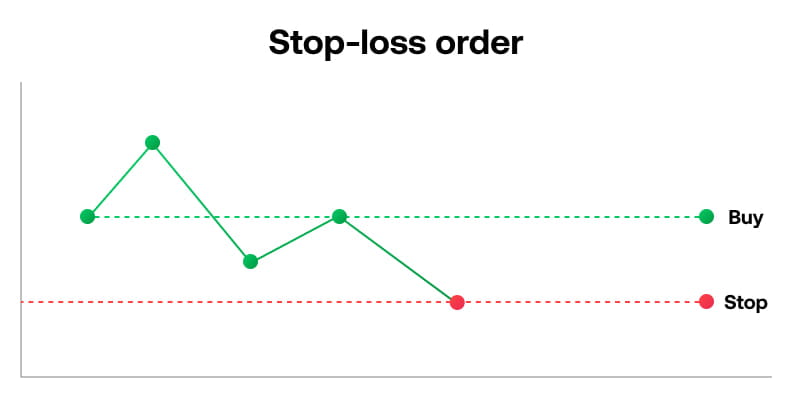Reviewed by Patrick Foot, Senior Financial Writer.
What are the risks of spread betting?
There are two main risks associated with spread betting: market volatility and leverage. Let's take a closer look at both.
Market volatility
Events such as macro-economic data releases, central bank decisions, major earnings or geopolitical events can cause markets to move quickly and experience high levels of volatility. While this volatility provides trading opportunities, it also presents risks.
Leverage
Spread betting is leveraged, which means that you can benefit from a large market exposure while only making a small outlay. However, while this will magnify your profits, it will do the same to your losses – which makes trading on leverage more risky than traditional investing.
Learn more about margin and leverage in spread betting.
Account features to manage spread betting risks
Your City Index trading account comes with two crucial default settings to limit your risk: Negative Balance Protection and Automated Margin Closeout.
Both settings are designed as protective measures and defined in accordance with the Financial Conduct Authority (FCA) regulations.
1. Negative balance protection
Negative balance protection ensures that you can never lose more than the funds in your account. If spread betting account falls into the negative, we will adjust the balance to zero, at no cost to you. Please note, this does not apply to Professional Traders.
What negative balance protection means in practice is that your losses can never exceed your deposits. Say, for example, that you have £100 in your account and use it to spread bet £2 per point on EUR/USD, which then falls 70 points. Your total loss would be £140, more than your balance.
In this scenario, we would reset your account to zero, so you wouldn’t owe the remaining £40.
2. Automated margin closeout
Your trading account has a pre-set margin closeout level, which is designed to prevent your positions from incurring excessive losses. If the net equity on your account hits our closeout level, set at 50% of your margin requirement, our system may close all your open positions at the first available price.
Our closeout level may take precedence over pre-existing instructions – even if your position hasn’t hit its stop or take-profit, we may close it on your behalf.
When the equity in your account drops below 100% of your margin requirement, you’ll be placed on margin call, which means your positions are at risk of being closed.
Learn more about how margin calls work.
How to manage risk in spread betting
Negative balance protection and margin close outs are useful as a last resort, but how do you ensure that you’re controlling risk in your day-to-day trading? Let’s look at a few useful techniques and tools to deploy.
Planning ahead
Financial markets can react quickly and dramatically to a wide range of events – whether it’s a company earnings announcement or a general election. And while volatility can produce trading opportunities, it can also increase the chance of financial losses.
To help you stay prepared, we provide you with resources to help you track market events:
- Economic calendar – lists the dates of major events and statements
- Company announcements – details the dates of company earnings (useful if you focus on shares)
- News and analysis – our expert team of analysts preview the biggest market-moving events, so you can plan ahead
However, sometimes volatility can spike with little warning, so being prepared for sudden market movements is also a key part of trading successfully. And the best tool you have to combat an unforeseen adverse move in one of your trades is a stop-loss order.
Using stop-loss orders
No trader has a 100%-win rate. That’s why it’s important that you implement risk management strategies to protect your profits, and one of the most popular tools to do this are stop-loss orders.
What is a stop-loss order (SLO)?
A stop-loss order is an instruction to your trading provider that automatically closes a trade if it incurs a certain level of loss chosen by you.
A key benefit of SLOs is that you don't need to constantly monitor your positions. You set the price level at which the stop loss is triggered, and should the market price move past that level, the trade is closed. It also prevents you from being tempted to run losses by holding onto a losing trade.

How do I add a stop loss?
Stop losses are free to add to a position. To add one, simply log in to your City Index account and open up a market’s deal ticket, then:
- Select the stop-loss box
- Enter the stop-loss price
Should you forget to add a stop loss, you can always add one once the trade has been opened.
You can also practise using stop losses with a free City Index trading demo. It gives you access to our full range of live markets, advanced tools and all our trading platforms – but with virtual capital so you’re risking nothing. Open your demo account here.
Slippage and stop-loss orders
It’s not always guaranteed that your stop loss will close at your chosen price. In periods of high market volatility, the price of a market can suddenly move well beyond your specified level, leaping over your stop loss. This is known as slippage, and if it occurs, then your SLO will close the trade at the best available price.
If you want the assurance that your trade will be closed at the prescribed level, you can use a guaranteed stop loss. You’ll pay a bit more for the trade, but will be guaranteed that your stop will never suffer from slippage.
Things to consider when setting your stop loss
- Try to strike a balance between being too close to the market price and too far. If you set your SLO too near to the market price, your trade may be closed out by just the smallest price movements. If you set it too far away, then it may fail to protect you from incurring larger losses
- You can set them at any time during the trade. Stop losses can be moved during an open trade in order to lock-in or break even on any profits that may have been made
SMS price alerts
SMS price alerts are another useful tool for staying on top of your trades when you’re not watching the markets. They help you stay in touch with the markets without having to monitor them continuously.
When you activate an SMS alert for your chosen market, you’ll be sent a notification whenever it experiences a “significant price move”. Exactly what this trigger point is will depend on each market and how volatile that market usually is (it’s typically a price movement between 0.25%-2%).
Following the alert, you can decide what action to take.
Making a trading plan
One of the best ways to keep your risk in check when spread betting is to make a trading plan. With a plan in place, you’ll have something to follow when volatility is high and the markets are stressful.
Here are few tips to creating a successful plan.
- Set out your maximum loss from each position, and how much profit you’ll need to target to make that risk worthwhile
- Decide which markets you’re going to focus on ahead of time, and when you’ll consider expanding your asset classes to find new opportunities
- Take your goals, experience and timeframes into account. Day trading, for example, may not be suitable for new traders who don’t have much time to dedicate to the markets
- Tweak your plan as you go. Use tools like Performance Analytics to assess your trades, and then adapt your strategy accordingly
- Read up on trading psychology. Understanding concepts like FOMO, overtrading and following the herd will help you decide whether an opportunity is really worth the risk
For more information on creating a trading plan, take a look at our trading strategies guide.



